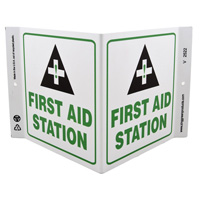| The Home page of ILPI's Safety Data Sheet (SDS) Resource, the leader in SDS information since 1995! | |
| The history and philosophy behind this resource. | |
| A curated collection of books and reference materials concerning Safety Data Sheets and closely related topics. | |
| Paste your plain text SDS into the SDS-Demystifier, and it will be converted into a hypertext-enriched document with links to detailed explanations of each key term. | |
| An extensive list of frequently asked questions about Safety Data Sheets including regulations, content, compliance, and more. | |
| A humorous take on Safety Data Sheet jargon. Fill in the blanks on our entry form to generate a personalized Unsafety Data Sheet to share with your coworkers. | |
| Since 1995, we've maintained this massive curated list of the best places to find Safety Data Sheets on the Internet. | |
| You are here! Way more than a glossary, this hypertext-enhanced resource covers hundreds of SDS-related terms and expert knowledge. Each entry includes both the SDS relevance and links to additional authoritative resources. | |
| Archived results of Safety Data Sheet related polls taken by some of our millions of site visitors | |
| The OSHA regulations behind SDS regulations, including the inspection guidelines and over 400 official interpretations letters under the Hazard Communication Standard | |
| Commercial suppliers of SDS authoring and management software as well as cloud compliance services. | |
| Commercial companies that will create SDS's for your specific needs as well as SDS translation companies. |

Safety signs, banners, and scoreboards? Get yours at Safety Emporium!
Definition
Analgesia is the loss of sensitivity to pain.
An analgesic is a substance that causes analgesia.
Additional Info
You may be familiar with the term "analgesic" for common pain relievers such as aspirin, ibuprofen, or acetaminophen for example. Each of these common over-the-counter (OTC) drugs are effective pain relievers, but each carries its own set of risks, particularly with long-term use; see Further Reading below to learn more./
Be careful not to confuse pain relievers with anesthetics which are used to block pain and other sensations during surgical procedures.
SDS Relevance
"Analgesia" may appear as a symptom of exposure in Section 11 (toxicological information) of a Safety Data Sheet. Acute exposure to certain chemicals such as ethyl chloride can induce analgesia among other symptoms. Less commonly, the term "analgesic" may appear in Section 4 (first-aid measures).
Complete or partial insensitivity to pain may sound great, but this presents a serious hazard. Imagine having no sensations of pain in your everyday life -- you might not notice that you have put your hand on a hot stove and suffered third degree burns until you smelled the charred flesh. Ugh!

We have all kinds of safety wall signs at Safety Emporium.
Further Reading
- Anesthesia & Analgesia is a journal publised by the International Anesthesia Research Society.
- Postoperative Analgesia: Economics, Resource Use, and Patient Satisfaction in an Urban Teaching Hospital, from Anesth Analg 2002;94:130-137.
- Guidelines for the Use of Anesthetics, Analgesics and Tranquilizers in Laboratory Mammals at the U of Minnesota. Available through the Internet Archive.
- Safety Concerns Associated with Over-the-Counter Drug Products Containing Analgesic/Antipyretic Active Ingredients for Internal Use (PDF file), an FDA Science Background report from 2004.
- Hidden Dangers of Over-the-Counter Pain Relievers at AARP.
- Cardiorenal Safety of OTC Analgesics at J Cardiovasc Pharmacol Ther. 2018, 23(2), 103–118.
- Safe Use of Over-the-Counter Pain Relievers and Fever Reducers at the US FDA.
- Chronic pain: Medication decisions at the Mayo Clinic.
See also: anesthesia, asphyxiant.